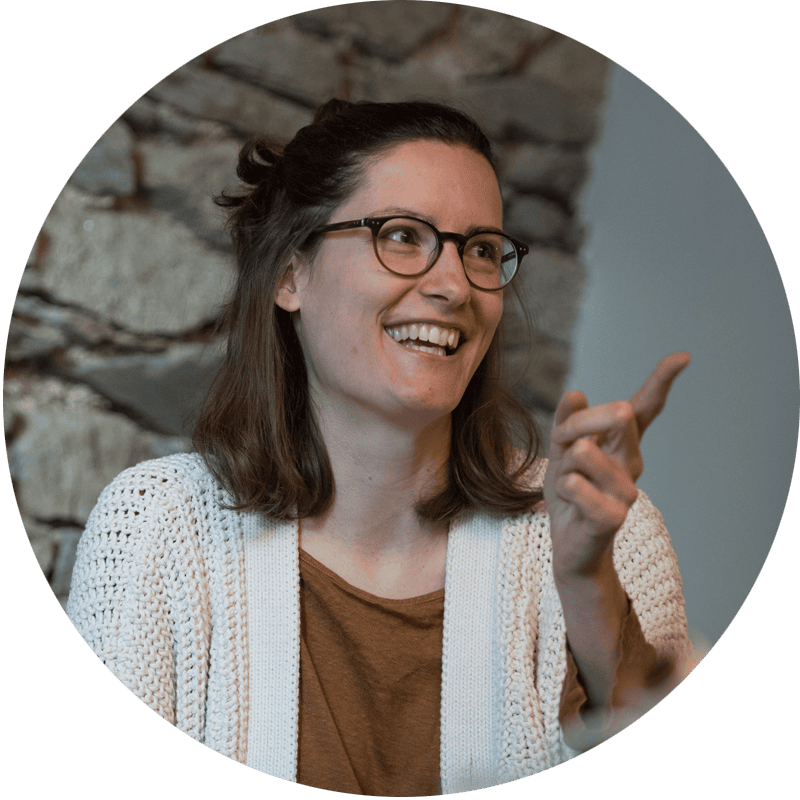If you are a placemaker, you have probably heard many beliefs and misconceptions about the kind of work that you do. Engaging people in the making of the city is key in creating better living environments – and more resilient communities. But it is often misunderstood – by professionals and non-professionals alike.
Some say that it’s all about communication. That it is inefficient, expensive or too time-consuming. That it is always the same who participate.
While some of these statements are just plain truth, others are beliefs that can easily be debunked. Now, if we want to turn these stereotypes upside down, I believe we first have to make them VISIBLE.
So during Placemaking Week Europe in Pontevedra, I asked placemakers to share the myths they’ve heard the most about their work, and I turned them into illustrations.
It was a very interesting experience. And more than the visual result, I would like to share the process with you, and the questions it raises. If you missed your chance to share your own anecdotes, don’t worry! You can also contribute to the growing visual library of placemaking myths, at the end of this article.
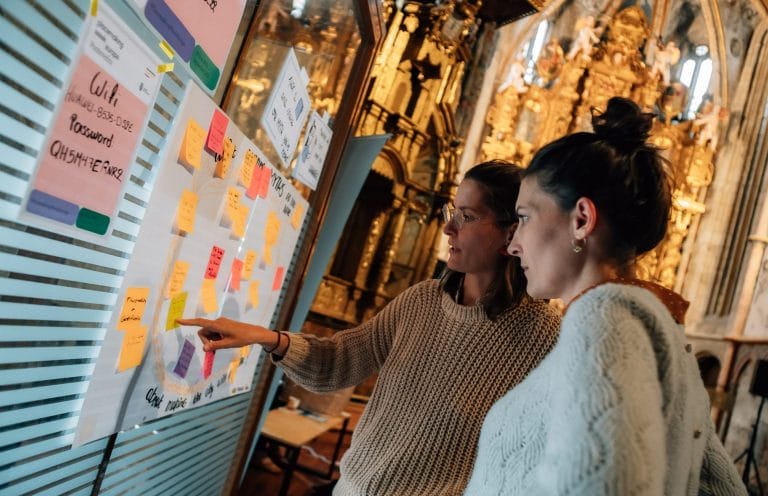
The problem with beliefs
Before we dive into the myths of placemaking, let’s get our definitions right. In this article, I use the terms “myth”, “stereotype” or “misconception”, but the underlying idea is the notion of belief.
Beliefs are assumptions we have about ourselves, other people, or the world around us. We take them for facts, often without question. They are formed throughout our life, based on the way we were raised, our knowledge, our life experiences, etc.
For example, “I don’t know how to draw” is a belief I often hear in my work as a visual facilitator. Once people start learning and practicing simple visual elements, they realize it is accessible and they get the chance to reconsider their beliefs. (By the way, if you think you cannot draw, watch Graham Shaw prove you wrong in this amazing video).
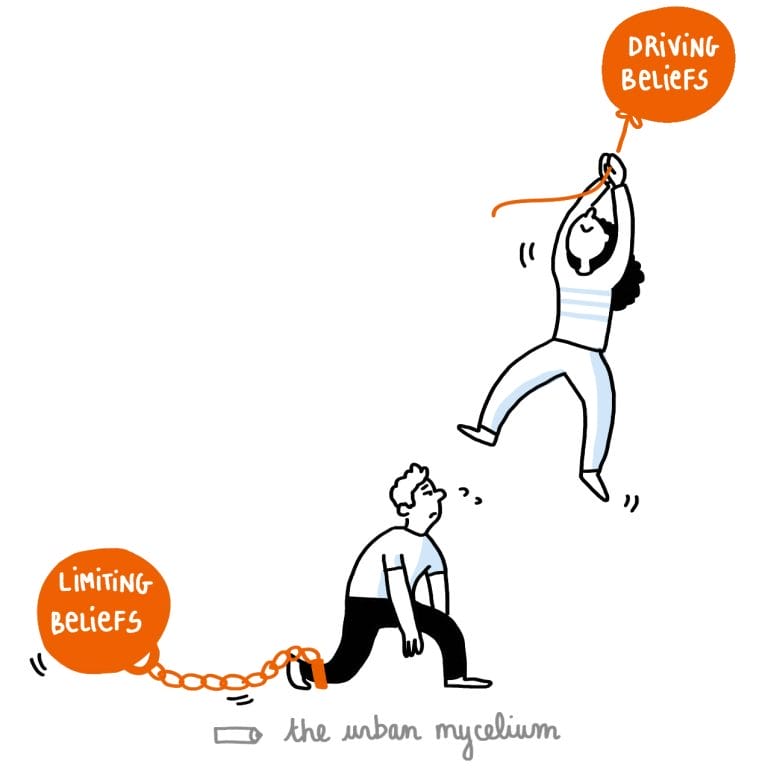
We all have beliefs as human beings, and that’s OK. Some of them are actually excellent drivers in life, for example “I am capable” or “the world is a beautiful place, with treasure around every corner”.
But others can cause:
- Conflict, when people (or countries!) argue over different beliefs
- Shame or marginalization: “I cannot play football because I’m a girl”
- Inaction: “I am so small, there is nothing I can do to mitigate climate change”
Most often, we are not aware of our limiting beliefs. But once we bring them into the light, we can begin to replace them with empowering beliefs (that drive us forward, instead of dragging us down).
Collecting beliefs about placemaking during Placemaking Week Europe
Of course, placemaking also generates its share of beliefs. During Placemaking Week Europe in Pontevedra, I organized a visual activity to collect them.
The visual facilitation process
In one of the event’s venues, I posted a large canvas on the wall, where I placed some sticky notes. The title was: “what are your myths about placemaking?”. I contributed with a few examples, and then people filled in their own stories (in their own time).
During the second day, I gathered the sticky notes and started to group them. A few ideas came back more than once (for example: “placemaking causes gentrification”). Some statements were examples of what the power holders could say in an urban project, while others were sayings you rather hear from citizens.
Then I turned each note into a drawing, and progressively filled the whole canvas until there was no more room. The result is a combination of everyone’s contribution, merged into one poster.

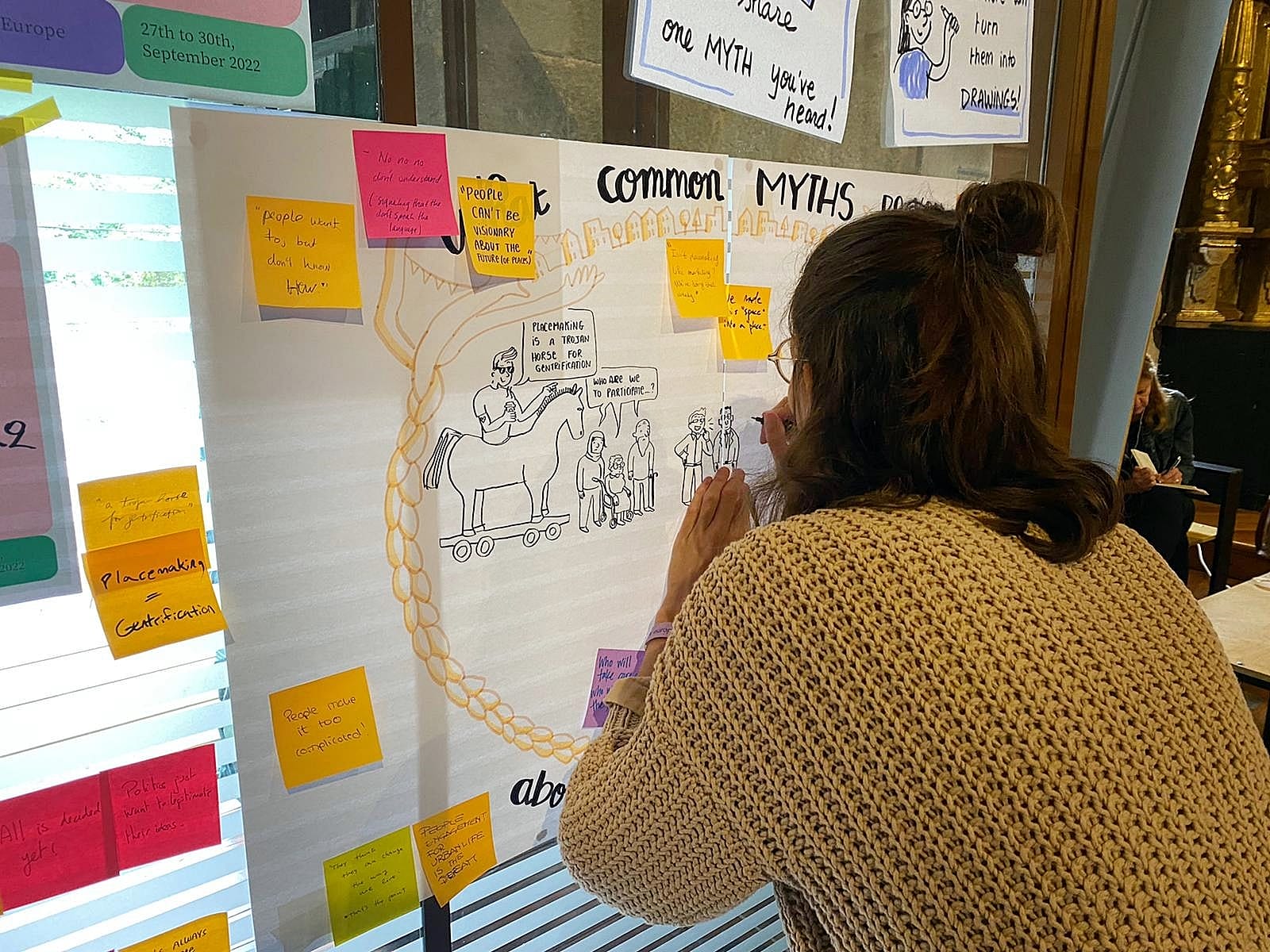
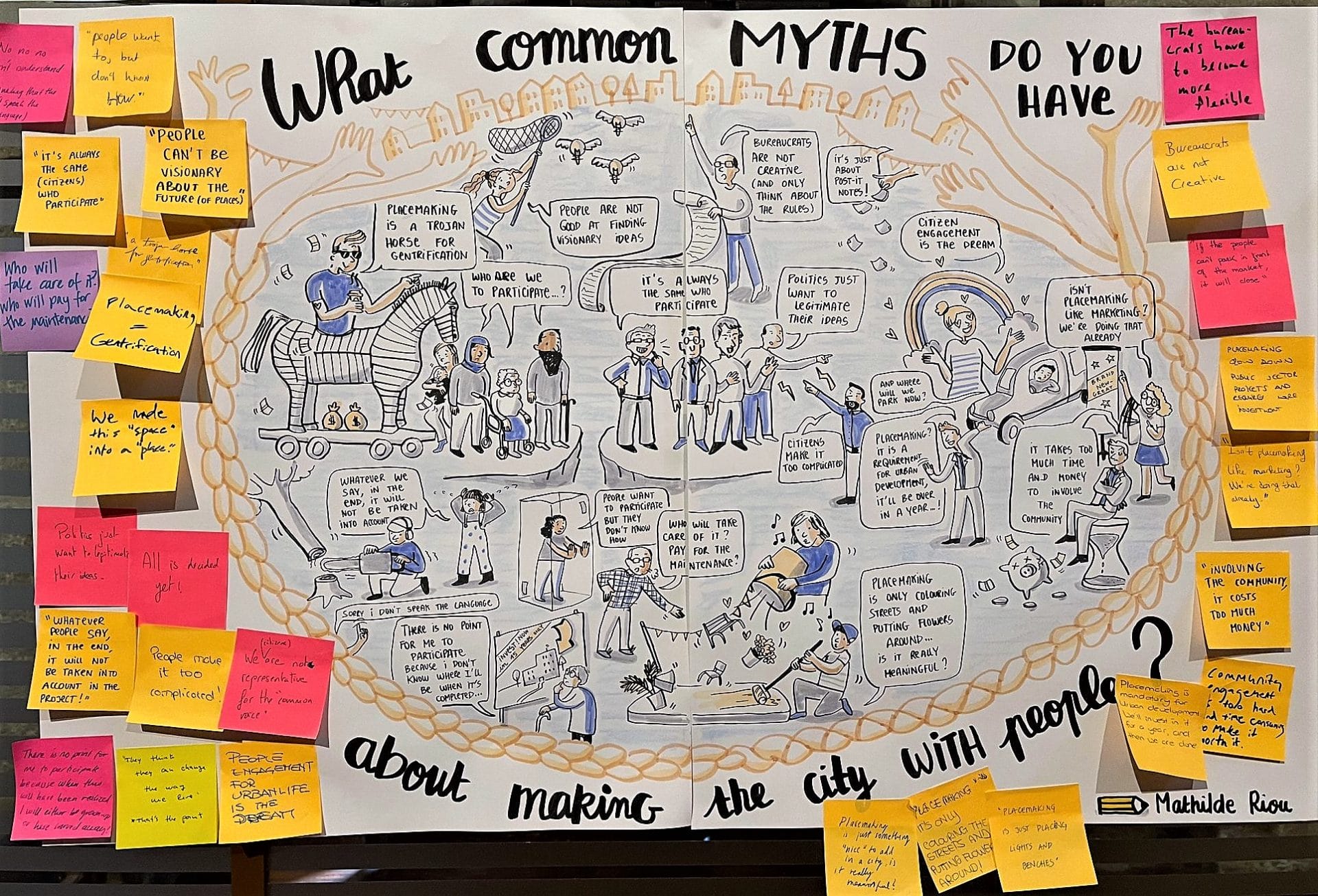
The placemaking myths
In the carousel below, you can take a closer look at the drawings. They can be divided into 4 different categories:
- What you often hear from the power holders / decision makers in urban projects (municipalities, elected officials, property developers, social housing corporations…)
- What you often hear from the experts and the project team (architects, designers, engineers…)
- What you often hear from the “non-professionals” / users of the city (citizens: residents, neighbours, associations, local entrepreneurs…)
- What you hear from placemakers or those whose job is to organize place-based community work (activists, placemaking consultants, facilitators, artists)









How to break down placemaking myths?
Well, that’s very nice, but what shall we do now?
Making stereotypes visible
I think that the very first step in turning stereotypes upside down is making them VISIBLE. Once we are aware of the limiting beliefs we have about placemaking, we can begin to replace them for empowering ones, that are truly serving the project.
Talking about it
The beliefs listed on the visual canvas are a reflection of the challenges and paradoxes that exist in placemaking projects. Most often, it is not about the tools, the method, or even the budget… but about the conviction whether working with the community is valuable for the project, or not.
I have seen of these arguments used as a reason NOT to include the citizens in the process (or as a way to discredit participation).
On the contrary, I believe that making the city with people is meaningful. That it can really create value for places and communities. That it contributes to create better relationships and more trust between decision makers and the citizens. But does it, really?
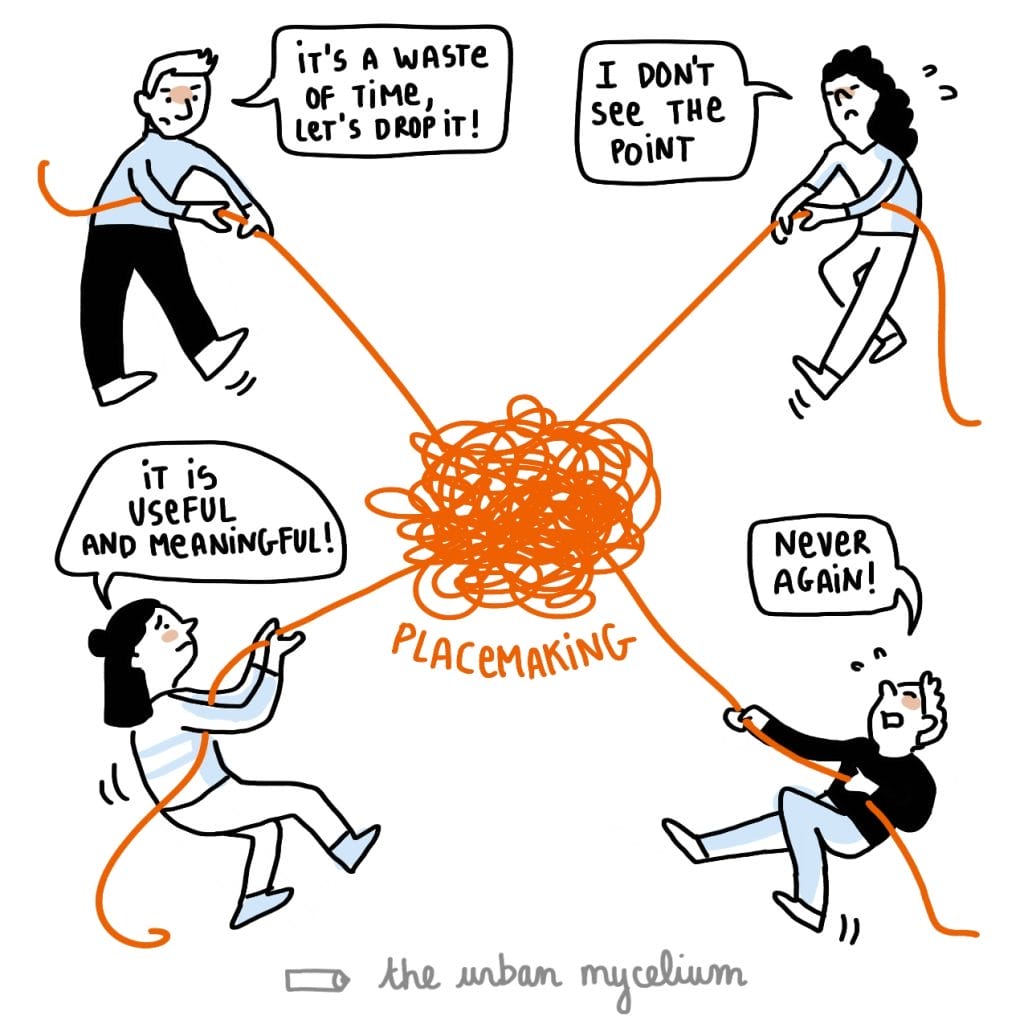
As you can see, in an urban project, each stakeholder sees the participatory process in a different lens. The key is to TALK about it. To understand what hides behind people’s beliefs.
In your next placemaking project, ask the stakeholders involved about their concerns and fears, their past experiences, their hopes about participation and placemaking.
You can also take advantage of that meeting to explore what participation means for you (given that it takes very different shapes), and why it is needed in the first place.
Putting everything on the table will not only foster an atmosphere of trust and transparency, it will also help clarify the agenda behind participation and give everyone the chance to reshape their beliefs for ones that truly serve the project and everyone involved.
If you want to use the visuals in this article to spark such conversations in your teams and projects, feel free!
Participate in the collection!
When I came back to Copenhagen after the Placemaking Week, I posted the visual result on LinkedIn and received a few more examples of beliefs from placemakers, which were very relevant. I thought it would be great to develop this library of beliefs further.
So if you would like to share your own anecdotes, the stereotypes you hear the most about placemaking, or the judgments you have yourself on the subject, you can do it in this form.
I am looking forward to hearing about your stories!

